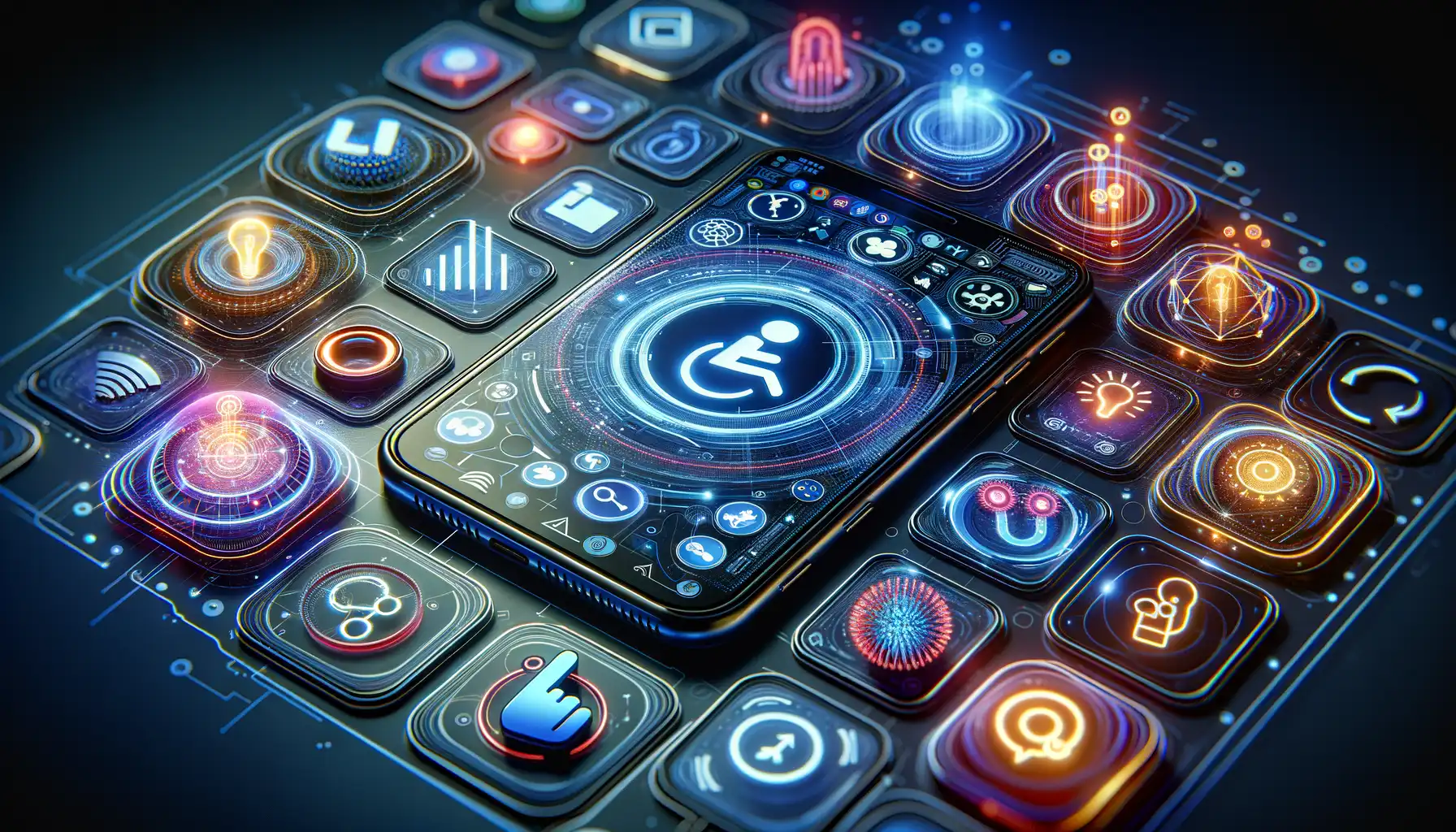Understanding Mobile App Accessibility and Its Importance
What Does Mobile App Accessibility Really Mean?
Imagine opening a door, only to find it won’t budge unless you can decipher a secret code. For some users, that’s exactly how mobile apps feel—barriers everywhere, with no keys in sight. Mobile app accessibility eliminates those barriers, ensuring apps are usable for everyone, including individuals with disabilities. It’s not about creating “special” apps; it’s about creating inclusive experiences that level the playing field.
Think text-to-speech tools reading out menus for visually impaired users or customizable color schemes helping those with color blindness differentiate key features. Accessibility is not just a feature—it’s a human right and, frankly, a game changer.
But here’s where it gets even more fascinating: designing for accessibility doesn’t just benefit a niche audience. It makes apps better for everyone. Need captions in a noisy café? Or voice commands when your hands are busy cooking? Accessibility steps up.
- Empathy-driven design: Recognizing and addressing diverse needs builds loyalty.
- Legal compliance: Many regions now mandate accessible apps, so being inclusive keeps you ahead of regulations.
Accessibility is about opening that metaphorical door—for every user, every time.
How Artificial Intelligence Transforms Accessibility Features

Breaking Down Barriers with Smart Technologies
Imagine unlocking the world with just one finger or hearing a photo come to life through speech—this is the magic that Artificial Intelligence (AI) brings to accessibility. For individuals navigating disabilities, AI has become more than just a convenience; it’s a lifeline, a bridge to experiences once out of reach.
Take voice recognition, for example. It’s no longer just about dictating text messages—it’s helping people who have limited mobility control entire devices hands-free. Meanwhile, AI-powered image recognition is revolutionizing independence. Apps like Google Lens can now narrate the contents of a menu or describe facial expressions in real-time. It’s as though technology has learned to see and speak on your behalf.
AI-Powered Features Shaping Lives
Here’s where AI becomes downright game-changing:
- Predictive Text: Beyond speed, this feature learns personal quirks in grammar or phrasing, turning long struggles into seamless communication.
- Live Translation: Tools like real-time captioning enable users to participate fully in conversations regardless of language or ability to hear.
- Gesture Recognition: For those who use sign language, apps are now decoding gestures into written or spoken words.
Innovation like this doesn’t just adapt to limitations—it obliterates them. And we’re only scratching the surface.
Key AI Technologies Driving Mobile App Accessibility

Breaking Barriers with AI-Powered Visual Tools
Imagine opening a world of possibilities for users with visual impairments. That’s exactly what AI is doing by combining the power of computer vision and mobile apps. Technologies like image recognition and object detection enable apps to “see” and interpret surroundings—think of it as giving your phone a set of helpful eyes!
For instance, apps like Seeing AI help users identify everyday objects: groceries, documents, even currency. It creates an experience that isn’t just functional but deeply human, bridging gaps many take for granted. And thanks to real-time processing, these features work faster than most of us can blink, making interactions seamless.
- Text-to-image translation: Apps describe photos aloud for visually impaired users.
- Color identification: Say goodbye to mismatched socks!
- Navigation assistance: AI guides users around obstacles or through unfamiliar environments.
Speaking the Language of Inclusion with NLP
On the language side, Natural Language Processing (NLP) is breaking down communication barriers. Picture this: someone with a speech impairment types just a few words, and the app auto-completes their thought based on learned behavior. Technologies like speech-to-text, predictive typing, or even voice cloning aren’t just tools—they’re lifelines.
For those with cognitive challenges, NLP simplifies complex content. Apps like Voiceitt or Google’s Live Transcribe ensure that no voice is left unheard. Whether it’s generating captions for videos or translating sign language into spoken words, NLP feels like a translator in your pocket—one that’s working overtime to include everyone.
Benefits of AI-Driven Accessibility for Users and Developers

Empowering Users Through Personalized Accessibility
Imagine opening an app, and it feels like it was made just for you. That’s the magic of AI-driven accessibility. For users, especially those with disabilities, this isn’t just about convenience—it’s about independence. With AI, apps can now respond intelligently to individual needs, enabling everyone to interact with technology on their own terms.
Take, for example, a visually impaired user navigating a complex navigation app. Instead of static, one-size-fits-all instructions, AI can provide tailored, step-by-step voice guidance based on real-time obstacles. Or think about how machine learning enables features like auto-captioning in video platforms—empowering hard-of-hearing users to enjoy content at the same time as everyone else. This is freedom redefined.
- Dynamic voice commands make hands-free use seamless for those with limited mobility.
- Customizable interfaces adapt layouts or font sizes to suit specific visual impairments.
- Real-time language translation bridges communication barriers, offering unparalleled inclusivity across regions.
Simplifying Development Without Sacrificing Innovation
For developers, AI isn’t just a tool; it’s a co-pilot. Building accessible apps has historically been a daunting task—time-consuming and riddled with complexities. But with AI? It’s a whole new ballgame. AI frameworks like TensorFlow and accessibility APIs actually *predict* potential barriers for users, flagging issues before they even go live.
Picture this: A developer integrates an AI-powered code review tool that analyzes whether their app supports screen readers effectively. Instead of endless manual testing cycles, feedback flows in like an intuitive checklist. The result? Better products, faster launches, and fewer headaches. And as an added bonus, compliance with accessibility standards like WCAG becomes automated, saving hours (and stress) for dev teams.
Not only does AI reduce the technical lift, but it also inspires creativity. Developers can now focus less on repetitive tasks, channeling their energy into creating *new*, cutting-edge solutions for inclusivity.
Future Trends and Challenges in AI for Mobile App Accessibility

AI’s Next Frontier: Smarter and More Inclusive Apps
Imagine a world where your mobile app understands you as naturally as a close friend. That’s where AI is heading, but the road isn’t without its bumps. As we move into the future, one exciting trend is the rise of real-time personalization. Picture an app that adjusts fonts, colors, or navigation elements instantly based on your behavior—no settings menus, just seamless adaptation.
Another game-changer? Emotion recognition technology. This isn’t sci-fi anymore; apps may soon interpret your tone or expressions to predict frustration and offer help before you even ask. But as promising as these developments sound, there’s a flip side—privacy concerns loom large.
- How do we balance user data collection with ethical boundaries?
- What happens when algorithms make mistakes in understanding unique disabilities?
Challenges of Bias and Innovation Costs
AI isn’t perfect—it learns from data, and that data can carry bias. For example, speech recognition might struggle with accents or dialects, alienating users instead of welcoming them. And let’s be real: not every developer has the budget to integrate such advanced AI systems. While innovation excites, it also creates barriers.
